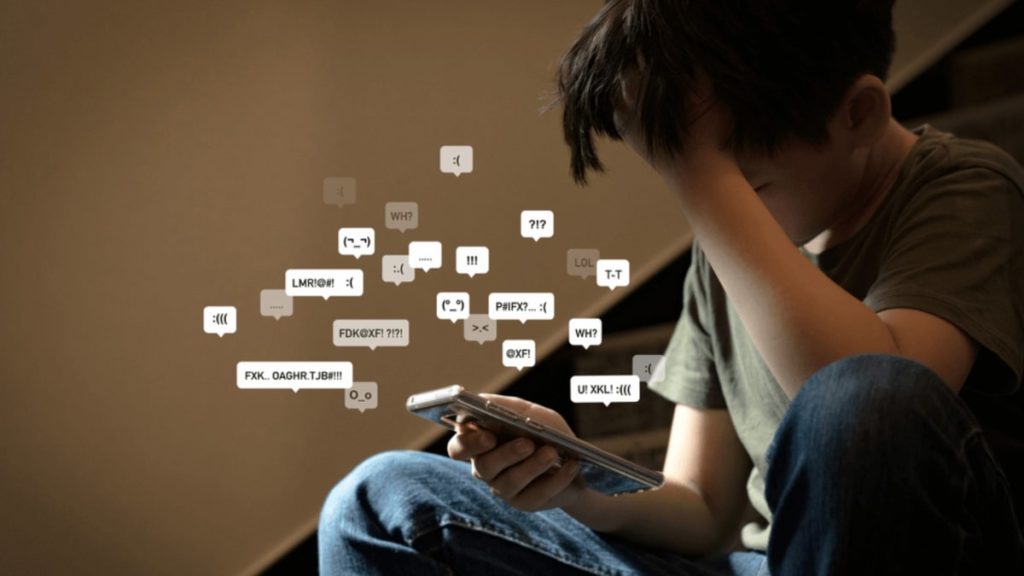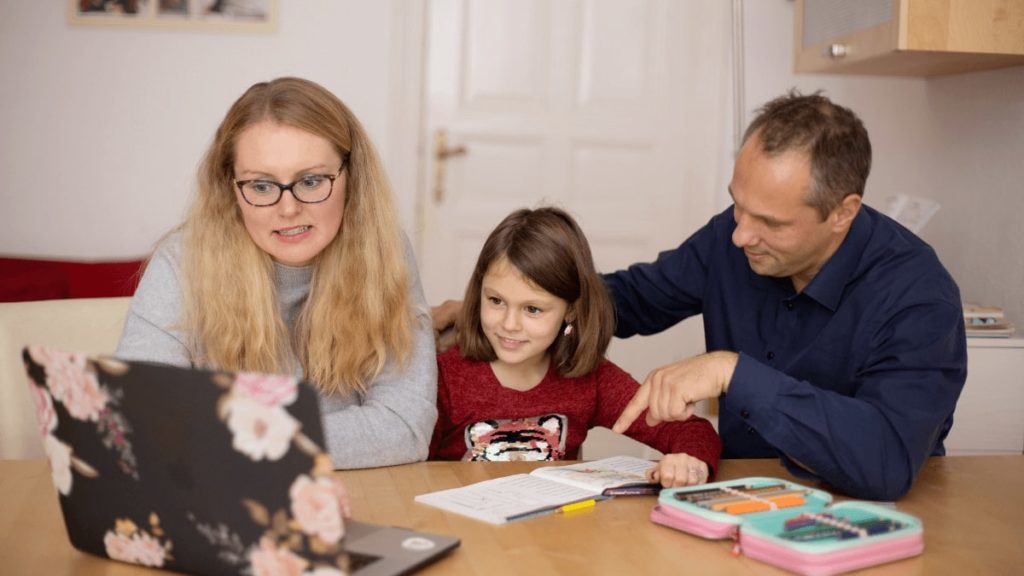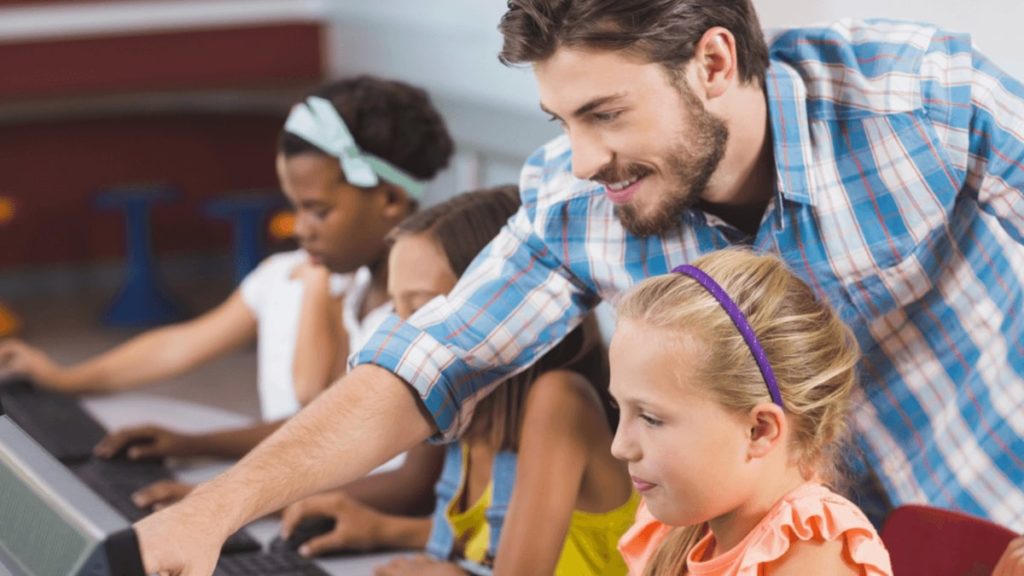“Technology is a useful servant but a dangerous master” – Christian Lous Lange. This quote explains the influence of the internet on our life quite well. Even though we cannot deny the blessing of the internet, we must accept its drawback as well. This brings us to the topic of this blog, what is e-safety?
Online bullying and cybercrime are happening daily over the internet, affecting many children and teenagers. While today’s children have the highest expertise on the internet, their parents may have trouble understanding how to use the smartphone correctly. In this situation, it becomes challenging for parents to monitor their children. So how can we safeguard youngsters from getting backlashes on social media?
This article gives you a broader view of what e-safety is all about and how you can implement it for your children’s safety.
Table of Contents
What is E-safety?
E-safety may also be referred to as internet safety, online safety, cyber safety or web safety. To simply explain E-Safety, it means being safe on the internet. Some people may even include the safe use of technology in e-safety. It may also be used to refer to the action of protecting individuals from harmful content online, such as – adult content, grooming and cyberbullying.

Internet has reached every corner of the world that can be accessed by different kinds of people. As we don’t know their intention, free interaction can sometimes bring about cyberbullying and harassment. Since children are the most persistent users of the internet, they become victims of internet crimes.
However, to protect the children, parents and teachers need to be concerned about this matter and ask themselves whether they are properly keeping an eye on the following:
- What type of content are they browsing?
- What kind of social media are they using?
- What kind of person are they coming in contact with?
- What are they uploading and downloading from social media and the internet?
- What are they exchanging with the person they communicate?
If you want to learn more about how to protect and safeguard your children or the children in your care, then join our Safeguarding Children Levels 1,2 and 3.
Why is E-safety a Big Deal?
Undoubtedly, the internet can create huge opportunities for young children to learn and show their potential. By using different platforms, they can spread and gain knowledge from others, which can ultimately help them to grow. But the misuse of internet and technology can also negatively affect them simultaneously. That is why teaching and demonstrating e-safety to the new generation has become very crucial.

But why is the risk of bullying and cybercrime getting so high nowadays? Since the devices such as – laptops, tabs, smartphones, and personal computers are getting cheap and affordable, everyone can own them easily.
Furthermore, with the invention of the wireless phone with internet connectivity, communication has become more convenient. As a result of this frequent use of smart devices and internet availability, the risk is getting higher with time.
Because of this unrestricted use of internet – bullying, exposure to unwanted content, and various type of abuse are frequently happening. Alongside that, adult content has become more available, private information is being leaked, and accounts are getting hacked by undesirable users.
Therefore, it has become a crying need for us to raise awareness about this issue and protect children from harm, abuse and bullying. To spread awareness among the children and parents, every year on 9th February, safer internet day is celebrated, where both parents and their kids get the opportunity to learn in-detail information about the use of internet from professionals with years of experience. In this program, they share the pros and cons of the internet with the young generation.
Children’s E-safety
Children are born in the era of technology. So, it is very normal for them to grow up using it as well. But as a guardian, can you allow your children to use them the way they want all the time? Probably not. Then you must monitor and guide them about – how much time they can spend on the internet and what type of content they can access.
Though you can browse anything online doesn’t necessarily mean all of them are educational or beneficial for children. Many unfavourable and harmful content can be there. That is why, when it comes to the internet activities of children, you need to ensure their safety by protecting them from undesirable contact, unsafe content and harmful software.

Besides that, it is also important to teach the kids about the types of people they can come into contact with. Because interacting with the wrong people often leads to bullying, harmful exposure and harassment. Children and teenagers usually become thrilled while interacting with one another and unable to identify the risk that can come along with it. That’s why parents should pay extra attention to this matter.
Children’s e-safety is crucial. Education on e-safety must begin at home and in schools. Besides educating the kids, parents, guardians, and teachers can use parental control software to manage the time children spend on the internet and antivirus software programs to protect the devices from unwanted viruses.
How to Ensure E-safety?
Ensuring e-safety is not only the parents’ responsibility but also their educational institution’s concern. Therefore, administrators and teachers should introduce them to ‘what is e-safety’ so that they can acknowledge the best use of it.
So, these are some ways that’ll help you ensure e-safety –

How to Manage E-safety in Schools?
Education is no longer limited to the physical classroom. Instead, it now has an online component too, and we must have realised that during the Covid-19 pandemic. Moreover, students no longer go to the library to pick up books. Instead, they would prefer to download them from the internet. That is how online platforms become an inevitable part of our life.
Internet use is also pretty common in schools and other educational institutes. Therefore, it is also the institution’s duty to enlighten the students about internet use and introduce them to e-safety.
For instance, IT classes can put emphasis on learning ‘what is e-safety’ and demonstrate to them the negative aspects of the internet as well as the preventive procedures needed. This will help them be safe and avoid the negative consequences of modern technology. Parents, teachers, and school personnel have to contribute their role to help young kids learn how to use the safe internet.

Furthermore, looking after the well-being of children’s mental health is also a concerning factor. With the free accessibility of social media, bullying is no longer confined to school settings; rather, it spreads on the internet. While experiencing this, most children get depressed and can’t find it in themselves to share this with someone. So, school administration should create a setting where students can freely share their issues.
Also, the teachers should advise and support the students so that they can easily recover from their trauma. Otherwise, unwanted consequences can happen without our knowledge.
How to Manage E-safety in Homes?
Home is called the first school for children. Children usually follow in the footsteps of their parents. So, when it comes to online safety, parents can play a significant role in educating them about ‘what is e-safety’.
Strong communication can help a lot to achieve that goal. Having an open and honest conversation with children about – what they can access and cannot make will help them understand how to use the internet properly. Also, parents should assure their children that they can talk to them or another trusted adult if they come across any harmful online contact or content.
Moreover, keeping an eye on the privacy setting can also help ensure the safety of the children. To do that, parents can use some antivirus software which will assist and warn them before browsing any risky content. Additionally, they can educate their children about how to behave online while interacting with others on social media and encourage them to be kind and respectful towards each other. It will help them understand how to act online.

Guardian needs to spend more time with their kids. Spending more time together can strengthen the relationship with parents, grandparents and siblings. As a result, they will spend less time on the internet. Also, encourage your children to do more extra-curricular activities and spend time outdoors rather than online.
If you want to learn more about how to protect your children or the children in your care, you can read – How to Safe Children from Abuse.
3 C’s of Online Safety
3 C’s of online e-safety are – Content, Contract and Conduct. These 3 components of e-safety define a lot about ‘what is e-safety’. Let’s know about the 3 C’s elaborately:
Content
Internet is a free platform, from which any kind of content can be accessed. So, children can upload and download anything from any site. It can be aggressive, abusive or adult content. That is why parents need to monitor what their children are doing online. Otherwise, any kind of undesirable image, video or contact can make a negative impact on their mental health.
Contact
Through the invention of technology, the world has become a global village, and communication has become easier than we could ever imagine. But free communication does not necessarily bring good to people.

With the advancement of social media, children nowadays come in contact with a lot of people. But this online interaction with unknown people can be harmful, and bullying and abuse can happen while interacting with them. In light of this, young people need to have a clearer picture of – who they can interact with.
Conduct
Conduct is all about how you behave online. Parents and teachers can play an important role here. Most of the time, children don’t know or understand how to behave and trace risk simultaneously. So, acknowledging how to act on the internet is also a major part of e-safety learning.
15 Ways to Ensure E-safety
Here are 15 basic internet safety tips for parents and children which will ensure e-safety –
1. Check the internet privacy setting on all your devices and accounts
2. Use a secure internet connection and VPN to protect your devices
3. Don’t browse any suspicious sites that use any click bites
4. Avoid downloading anything from any websites that are suspicious
5. Ignore visiting any websites which unexpectedly pop into your computer
6. Use antivirus software to protect your devices
7. Utilise parental control software which will ensure your children’s safe browsing
8. Keep the computer or other devices in a shared area
9. Monitor your children’s use of the internet to keep your children away from coming into harmful contact
10. Encourage children to share their online interactions, especially interactions that make them uncomfortable with you or other trusted adults
11. Never share any personal information on any public platform. Personal information includes – phone numbers, home addresses, personal email, and social security numbers
12. Use strong and unique passwords for different social media accounts
13. Turn on safe search mood in your Google search settings and restrict unwanted websites
14. Limit the amount of time you and your children spend on the internet
15. Apply two-factor authentication to provide another layer of protection to your devices
Teaching E-safety
Why has internet safety become so essential for us? Why is it so important to teach e-safety to the young?
The answer is that many undesirable possibilities can happen without the knowledge of safe internet usage. So, it’s always better to take precautions than to find a remedy afterwards.

Let’s see how you can teach the youngster about e-safety:
- Become more friendly with the kids so that they feel comfortable sharing everything with you.
- Inform the children about digital footprints and how people can learn from them
- Encourage them to browse educational websites more and avoid harmful content.
- Teach them why they shouldn’t contact an unknown person on the internet.
- Motivate them to maintain positive communication with people.
- Advise them to avoid sharing any personal information online.
- Teach them to handle online criticism well and how to avoid engaging in harmful interactions
Summary
In this article, we have learned ‘what is e-safety’ and how to ensure e-safety. With the emerging time of technology, our children are growing up using it. So, it’s imperative for parents, guardians and teachers to protect their children online. And we should educate children about e-safety and introduce them to the internet risk.
Besides teaching e-safety, parents should also take care of their children’s mental health if they go through any unwanted circumstances. Without getting anxious yourself, you have to stay calm and be there for them. They need counselling and support to go through that difficult time. You can prepare yourself by taking this Counselling Children and Supporting their Well-being course.
FAQs
1. Why is e safety important?
E-safety is crucial because it protects people from online threats like cyberbullying, identity theft, and exposure to inappropriate content. It ensures a safe online environment for users of all ages, especially children, by promoting responsible internet use and educating about potential risks.
2. What is e safety in schools?
E-safety in schools refers to the practice of promoting safe and responsible use of technology among students to protect them from online threats such as cyberbullying, inappropriate content, and online predators. It involves educating students about online risks and teaching them how to navigate the digital world safely. E-safety measures also include implementing policies and procedures to ensure a secure online environment within educational settings.
3. Why is e safety important for a child?
E-safety is crucial for children because it helps protect them from online risks such as cyberbullying, inappropriate content, and online predators. By promoting safe internet use, children can navigate the online world securely and responsibly, ensuring their well-being and development are safeguarded.
4. How e safety can be implemented in schools?
Implementing e-safety in schools involves creating a comprehensive strategy to educate students, teachers, and parents about online safety practices, utilizing tools and resources such as educational programs, parental controls, and policies to ensure a safe digital environment conducive to learning and responsible internet usage.
5. What do the 3 c’s stand for safeguarding?
The 3 C’s stand for Content, Contact, and Conduct in safeguarding.







 September 02, 2023
September 02, 2023








